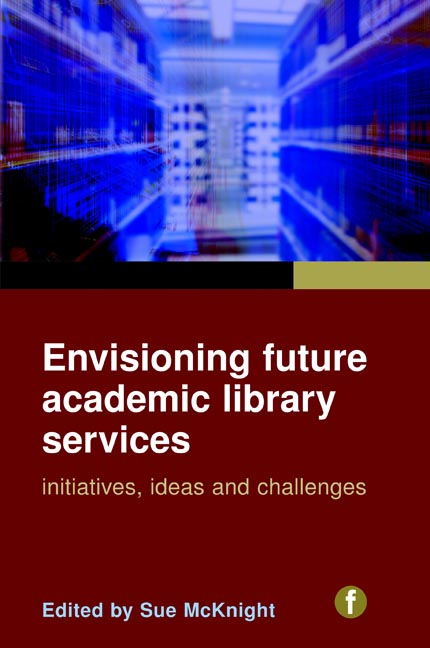Book contents
- Frontmatter
- Contents
- Foreword
- Contributors
- Introduction: We create the future!
- 1 Waiting for the barbarians: seeking solutions or awaiting answers?
- 2 The delete generation: how citizen-created content is transforming libraries
- 3 Libraries as places: challenges for the future
- 4 Web 2.0: redefining and extending the service commitment of the academic library
- 5 Second Life and libraries: boom or bust?
- 6 Some new business ideas in the HSS publishing space: what may librarians expect?
- 7 Loosely joined: the discovery and consumption of scholarly content in the digital era
- 8 Knowledge management, universities and libraries
- 9 Libraries and the management of research data
- 10 The leadership of the future
- 11 Adding value to learning and teaching
- 12 In search of the road ahead: the future of academic libraries in China
- Index
5 - Second Life and libraries: boom or bust?
Published online by Cambridge University Press: 08 June 2018
- Frontmatter
- Contents
- Foreword
- Contributors
- Introduction: We create the future!
- 1 Waiting for the barbarians: seeking solutions or awaiting answers?
- 2 The delete generation: how citizen-created content is transforming libraries
- 3 Libraries as places: challenges for the future
- 4 Web 2.0: redefining and extending the service commitment of the academic library
- 5 Second Life and libraries: boom or bust?
- 6 Some new business ideas in the HSS publishing space: what may librarians expect?
- 7 Loosely joined: the discovery and consumption of scholarly content in the digital era
- 8 Knowledge management, universities and libraries
- 9 Libraries and the management of research data
- 10 The leadership of the future
- 11 Adding value to learning and teaching
- 12 In search of the road ahead: the future of academic libraries in China
- Index
Summary
Introduction
Second Life (SL) is arguably the most popular and well known of what are known as multi-user-virtual-environments (MUVEs). While awareness and knowledge of MUVEs is growing there are still many who have only a vague idea of what they are and how they relate to the future of libraries and higher education. In 2008 Educause added a section on SL to its ‘7 things you should know about …’ series, which provides a useful framework for this discussion.
Launched in 2003, Second Life is the largest virtual world, with tens of millions of square meters of virtual lands, more than 13 million registered users (or ‘residents’), and a thriving economy…. Developers of Second Life continue to refine the application, adding functionality and increasing the level at which aspects of the environment – such as the flowing of water, the movement of trees in the wind, the way light changes during the course of a day – reflect those of the real world. Residents of Second Life exist ‘in-world’ through personal avatars, [animated figures that can walk, run and fly] and can spend time in any of a vast number of locations (or ‘islands’) that have been created for purposes including education, socializing, entertainment and commerce.
(Educause, 2008)The costs of a Second Life
One question that arises early in any discussion of SL is that of cost. It is possible to participate in SL without any expenditure of money. There is no cost for the SL program download, nor for the avatar and its use. While some areas of SL are blocked from entry by their owners, most areas are open to the public at no cost. Additionally, many interest groups have been organized. You can join multiple groups at no cost and receive notification of their activities. Most of these activities – poetry readings, plays, dances, classes, discussion groups – are also available at no cost. And there are locations called ‘sandboxes’ on which you can build and script objects to store, at no cost, in your inventory. ‘Sandboxes’ are regularly cleaned of the objects created there. You must own, be given owner privileges or rent property in SL in order to permanently place objects. Owning land costs money.
- Type
- Chapter
- Information
- Envisioning Future Academic Library ServicesInitiatives, ideas and challenges, pp. 69 - 86Publisher: FacetPrint publication year: 2010



